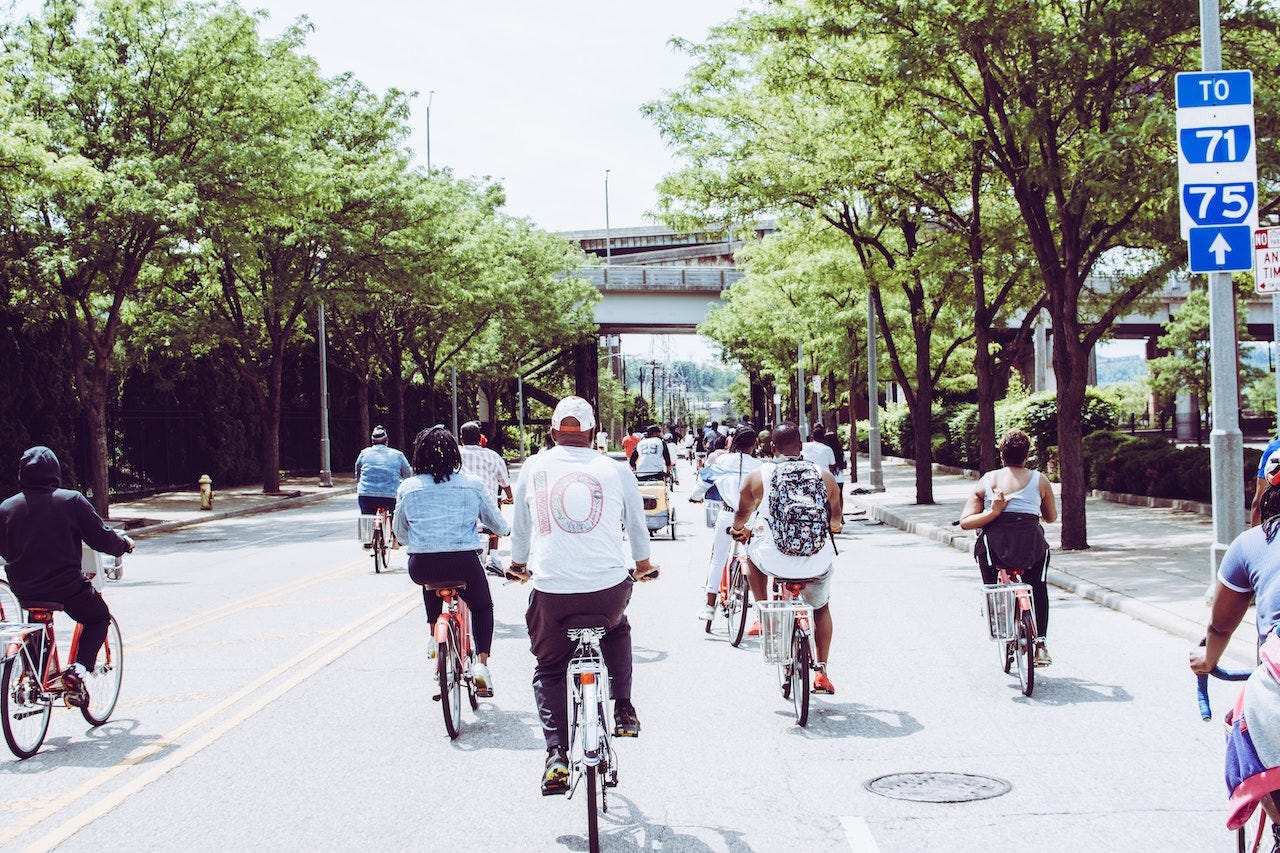Getting your fringe urbanism ideas into mainstream discourse
Is your bicycle/pedestrian advocacy stalling? Steal what works from the auto industry.
There are some valuable things I learned working as a traffic engineer. Maybe the most important realization was that the way professionals cling to pseudo-science at every turn. The way traffic is analyzed, the way roads are designed and built, the way future roads and sidewalks and bike lanes are planned—there’s far more religiosity than skepticism.
Religion is based on faith, science is based on skepticism. You can certainly live a life that honors both, but it’s important to understand the basic differences.
Americans were convinced early in the 20th century to abandon human-scale design in favor of car-oriented design because of great storytelling campaigns. Futurama, The World’s Fair, and The City of Tomorrow were programs with mesmerizing visions of what cities could deliver:
Happiness
Safety
Freedom
Beauty
The marketing messages took hold in America, and what was once a fringe idea (a car in every driveway) became mainstream.
One of the sentiments I heard over-and-over again in the transportation business was “it’s too bad about that cyclist getting hit by the truck, but he should’ve known better.” You’ll see that sort of victim blaming subtext in articles about pedestrian and bicycling crashes any given week.
If you and I are going to bring messages of remarkable change in American towns, cities, and counties, we can’t keep rolling along in the shoulder the way we have been. Our human instinct is to fight back, and we advocates become caricatures in modern culture. Advocates and activists often get labeled as out-of-touch do-gooders who want to revert society to caveman days.
Sure, it would be rolling back progress to eliminate motor vehicles. But let’s get something out of the way: There is in fact a war on cars.
But cars aren’t being damaged and destroyed by gentle people walking and bicycling. Cars are being destroyed by other cars. It’s car-on-car violence, and I know you want to help put an end to it.
It just so happens that the safest conditions for cars are also the safest conditions for humans. What a happy coincidence that the safest place to walk is also the safest place to drive. Why? Because people aren’t driving very fast.
Children growing up in Copenhagen right now think their city has always been bike-friendly. “It’s always been that way.” But 50 years ago Copenhagen looked a lot like Richmond, VA where I live. Cars driven and stored everywhere, with a few bicycles on the fringes.
Americans have self-limiting beliefs about bicycle culture. Those of us who want to save lives and expand freedom of mobility might get overwhelmed, so remember Copenhagen. Remember things can get better in the end.
I’d like to butcher a sacred cow of bike advocacy.
Once upon a time, some surveys were given to discover comfort levels using a bicycle as transportation. The result was four types of cyclists, now widely written about in bike/ped planning circles:
Strong and fearless
Enthused and confident
Interested but concerned
No way, no how
People identified their comfort level based on their own understanding of bike infrastructure. Based on their own experiences. Based on what they thought was possible in America. (Based on their limited beliefs.)
Here are two examples of survey results, paraphrased by me:
In Berkley, CA, 71% are interested but concerned. 10% say they’ll never ride a bike as transportation.
In Austin, TX, only 39% are interested but concerned and a whopping 44% say they’ll never ride.
These are surveys with good intentions, taken during bike master plans. But they won’t get us any closer to equitable transportation. Do you really want to just look at those Austin results and say “Well, they’re ok with deadly streets. To each their own.”
No. You protect all human life. The goal is walkable, bikeable infrastructure for everyone. Even that 39% in Austin.
Let’s get away from the bicyclist categories.
We ARE making some progress in this country. Bike share and scooter share are becoming less obscure. Protected bike lanes are being installed nationwide. (I know, I know, paint isn’t the same protection as concrete but celebrate the wins!)
Instead of adding one or two percentage points to the “interested but concerned” category in your community, aim to make bicycle culture so attractive that everyone wants some. Let’s make it mainstream. And 50 years from now, kids will think American cities have always been bike-friendly.






You're selling a failed strategy.
http://commuteorlando.com/wordpress/advocacy/doom-or-possibility/
Geller's categories are also nonsense:
https://john-s-allen.com/blog/2022/12/roger-gellers-categories-conflate-characteristics/